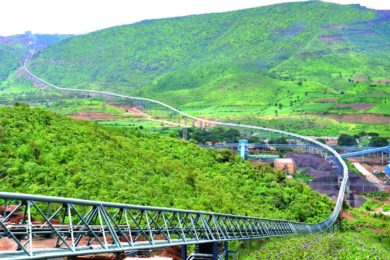A report by PricewaterhouseCoopers (PwC), Mine As good as it gets?, shows that while revenues of the top 40 mining companies grew by 32% in 2007, costs increased by 38%, thereby reducing margins. The fifth annual report provides a comprehensive analysis of the financial performance and position of the global mining industry and also discusses current trends in the global mining industry.
During 2007, the global mining industry did not see the effects of economic slowdown that hit other regions or sectors of the economy. With explosive growth continuing, especially in emerging economies, mining companies were struggling to keep up with demand. The findings of the analysis by PricewaterhouseCoopers include:
- Market capitalisation of the industry grew by 54%, with noted strength from the diversified giants and emerging market companies
- For the first year since 2002, the initial year analysed, cash flows from operations were insufficient to cover the increased levels of investment activities; significant external financing has been obtained to fund the various growth ambitions
- Total shareholder returns for the top 40 averaged 119% in 2007, compared to 55% in 2006.
Tim Goldsmith, Global Mining leader, PwC said: “2007 continued to be great for the global mining industry. Record commodity prices and continued growth in emerging economies have let the top mining companies avoid the slowdowns that we have seen hitting other sectors.
“While most indicators are still showing strong performance and continued growth, we have seen a decrease in margins due to cost increases. And with continuing issues with skills shortages, it is ever harder to bring new supply to the market. For some industry participants, this may be as good as it gets, however, for those companies operating low cost long life mines the future looks very bright.”
With volatile commodity prices, mining companies are well placed to exploit the growth in certain regions, and this is reflected in the fact that the diversified majors, particularly those with iron ore and coking coal assets, were by far the most profitable players.
Despite this growth, certain challenges are facing the industry today, both from external and internal influences. A new breed of CEO has to deal with these challenges and they have been quick to capitalise on the increased operating cash in-flows. Many young CEOs (both in age and tenure) have undertaken dramatic transactions within months of taking on top positions. How well they can maintain these so far impressive growth rates will ultimately determine their survival.
Goldsmith: “To help achieve growth, all CEOs must now more than ever be attuned to managing the 3Ps: people, power and procurement. With constraints in these critical areas, planning and project management are essential to ensure success.”
The composition and ranking of the top 40 companies analysed continues to change, especially with respect to global diversification and emerging markets presence, noting another year of strong performance. Companies from emerging markets have shown particularly high growth and now comprise 36% of the top 40’s market capitalisation, demonstrating the importance of these economies to the industry as a whole. Although companies are now facing increased risk as they look to further expand into and compete with emerging markets. With greater significance of operations and companies in these markets, the geopolitical landscape for global mining companies has shifted.
But the boom for mining companies does not come without local challenges, especially for those living and operating in mining towns. Higher costs of living and a shortage of skilled labour are proving to be challenges for those living and operating in these cities and towns. The report looks at the specific difficulties that exist in Perth, Australia as an example of a mining boom town. IM commented on this in the leader in November 2007 – The toll of the boom.








